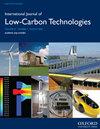超细粉煤灰水泥-低碳水泥混合浆/砂浆/灰泥对粘土与粉煤灰砖砌筑净零砌体墙体的影响对比研究
IF 2.3
4区 工程技术
Q3 ENERGY & FUELS
引用次数: 0
摘要
在建筑领域,水泥作为粘合剂和强度依赖材料,在所有构件和部件中起着至关重要的作用。水泥材料的生产会排放大量的二氧化碳气体,这是造成全球变暖和其他环境和健康问题的主要原因。为了克服这一问题,低碳或净零水泥的生产和利用是必要的,这同样满足了传统普通硅酸盐水泥(OPC)的粘结能力。堆场中堆存的火电厂飞灰是最常用的水泥替代材料。由于其优异的火山灰性质,这种粉煤灰可以用来代替建筑行业的结合材料,以实现碳中和。在本研究中,粉煤灰被用来制备净零砂浆代替大量的水泥。粉煤灰在其自然形态和被磨成微小颗粒后被利用,以增加反应性和有效性。抗压强度测试允许通过改变水灰比来详细检查机械性能,使用和不使用超级增塑剂(SP)。最好的砂浆是细粉煤灰(FFFA),水灰比为0.4 + 1% SP。为了验证研究结果,对改进砂浆进行了表征研究。本文章由计算机程序翻译,如有差异,请以英文原文为准。
Comparative study on net-zero masonry walls made of clay and fly ash bricks and grouts/mortars/stuccos with the effect of super fine fly ash blended cement—low carbon cement
In the construction sector, cement plays a vital role in all the members and components in which it acts as a binder and strength-dependent material. The production of cement material emits a large quantity of CO2 gas, which has been the main cause of global warming and other environmental and health issues. To overcome this issue, low carbon or net-zero cement production and utilization is a necessity, which equally satisfies the binder ability of conventional ordinary Portland cement (OPC). The fly ash from thermal power stations that is deposited in the yard is the most frequently used replacement material for cement. Due to its excellent pozzolanic properties, this fly ash can be utilized in place of binding materials in the building industry to achieve carbon neutrality. In this investigation, fly ash is used to prepare net-zero mortars in place of a significant amount of cement. Fly ash is utilized both in its natural form and after being ground into tiny particles for increased reactivity and effectiveness. The test for compressive strength allows for a detailed examination of the mechanical properties by altering the ratio of water to cement with and without the use of super plasticizer (SP). The best mortar is fine F fly ash (FFFA), which is made using a water-to-cement ratio of 0.4 + 1% SP. To validate the outcomes of this investigation, a characterization study of the improved mortars was examined.
求助全文
通过发布文献求助,成功后即可免费获取论文全文。
去求助
来源期刊

International Journal of Low-carbon Technologies
Engineering-Architecture
CiteScore
4.30
自引率
4.30%
发文量
106
审稿时长
27 weeks
期刊介绍:
The International Journal of Low-Carbon Technologies is a quarterly publication concerned with the challenge of climate change and its effects on the built environment and sustainability. The Journal publishes original, quality research papers on issues of climate change, sustainable development and the built environment related to architecture, building services engineering, civil engineering, building engineering, urban design and other disciplines. It features in-depth articles, technical notes, review papers, book reviews and special issues devoted to international conferences. The journal encourages submissions related to interdisciplinary research in the built environment. The journal is available in paper and electronic formats. All articles are peer-reviewed by leading experts in the field.
 求助内容:
求助内容: 应助结果提醒方式:
应助结果提醒方式:


